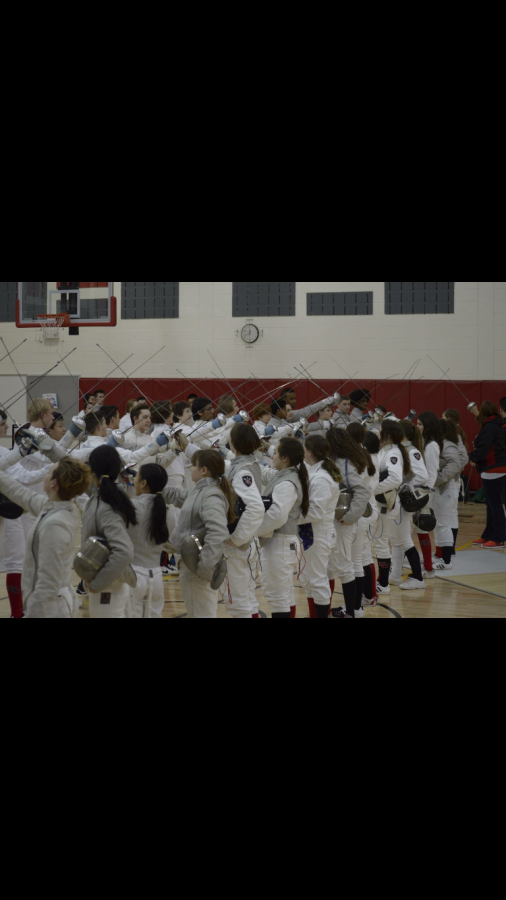Fencing Team Strikes at States
In many sports, the path to success is pretty clear: hard work and dedication leads to eventual triumph. The same is true in fencing. Generally, people who are knowledgeable about the sports world know this, but are unaware of what goes into training for the lesser-known sports such as fencing. “I started in fourth grade. I’ve been doing it for almost eight years. It’s been a long time,” says junior Ben Cafaro, A-strip, the best fencer of the foil team. If you don’t know much about the sport of fencing, most team fencing tournaments are set up in one large pool where every team faces each other and each team is ranked at the end by how many wins they have. The team’s A-strip, like Cafaro, goes against the A-strips of other teams, B-strip against B-strip, and C-strip to C-strip. Tiebreakers include indicators like points scored during match-ups against the other teams.
Many of the fencers train solely at school, but excelling at the sport requires work both in and out of the season. “The high school season’s just three months, but there is year-round individual fencing that isn’t related to high school at all,” said Cafaro on his training. “That’s usually how you start. A lot of people do individual fencing outside of the school, like club fencing, and there’s a huge circuit of tournaments and stuff outside of the school. There’s Nationals and Junior Olympics… Stephen Olson and I just did Junior Olympics over the weekend.”
Most people might believe the season takes place in the winter, but it takes commitment to become more than just your average fencer.
Cafaro isn’t the only fencer that takes his training seriously. “I actually started when I was about eight or ten years old down at Clinton Fencing Club,” said B-strip Stephen Olson. “I really started competitively fencing at the end of seventh grade. Now, I train year-round at Manson Academy of Fencing in Whitehouse Station, and I’m there anywhere from ten to fifteen hours a week.”
Fencing, like all other sports, requires many hours of training to master. It is a sport that requires a tremendous amount of focus and precision, continuous fine-tuning of technique, and lots of improvement in agility and reaction time. Cafaro had a lot to say about how much he enjoys fencing in competition. “It’s just a fun sport because you stay healthy with it, athletic, and it’s a good hobby. People of all ages do it, too. I’ve been to tournaments where you see fifty-year-old guys and they’re beating people who are my age. They’re really good fencers.” Fencing is a passion that a number of people can enjoy for most of their life,all year round. Fencing is not meant for just school or professional competition, because there are amateur meets as well.
In the NJSIAA State Championships on Saturday, February 20, Cafaro, Olson and C-strips Jon Deneka and Jason Pang finished third, narrowly beating out fourth-place North Hunterdon by five points. A third-place finish is no small feat, having to go through the district championships in order to qualify for states in addition to performing exceptionally well in the state meet. Aside from this, the athletes are already looking forward to an exciting season starting next December. “I think we’re gonna have a really good team next year,” said Cafaro. Olson agreed, saying “Jon Deneka will be returning as a junior, and Ben and I will be seniors, so we’ll still have our entire team with the foil squad.” Clearly this was a special season, with a relatively young team to boot, so next season will also be highly anticipated. It should be interesting to see the improvement of the already-elite team returning for another year and their quest on a legitimate run to take the title.
